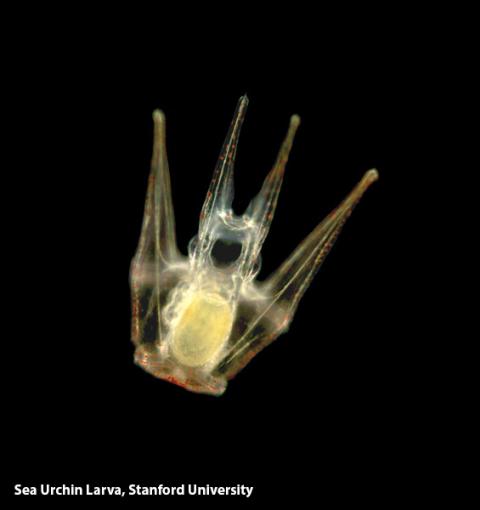
It’s very easy to see sea urchin fertilization, cell division and embryonic development under a microscope. Realizing that the animals could be a great teaching tool in the classroom, the sea urchin development lab at Stanford’s University’s Hopkins Marine Station, led by Dr. Dave Epel, created the “Virtual Urchin” website. The goal of this project is to provide inquiry based lessons, available on a freely-accessible, open access website. Students can explore how scientists study sea urchins to understand larval development and metamorphosis, community ecology, pollution in the marine environment and biological evolution.
In order for students to become familiar with the body plan of the animal, the site includes sea urchin anatomy. Students can watch a video of the fertilization and the early development of the embryo online. There are also some very advanced activities about the larvae, instructing students how to virtually manipulate gene function to learn more about their development. If a teacher has access to live material, modules teach how to use a microscope, and then instructions for doing a fertilization lab in the classroom.
Moving beyond the basics, the Predator-Prey game lets students guess which organisms are prey and which are predators to sea urchin adults. In the new Surfing to Settlement tutorial and interactive game, students explore an urchin larva’s life in the ocean including its challenges both to growth and finding a place to call home. It also includes other larval animals in the urchins’ neighborhood.
Our acidifying ocean is a tutorial with interactive games about climate change and how the ocean is acidifying and will continue to do so in the future if we don’t limit carbon dioxide emissions. The students learn how a more acid ocean means less carbonate available for animals that have calcium carbonate skeletons or shells, like sea urchins. A virtual lab lets students see the specific effects of a more acid ocean on sea urchin larvae.















